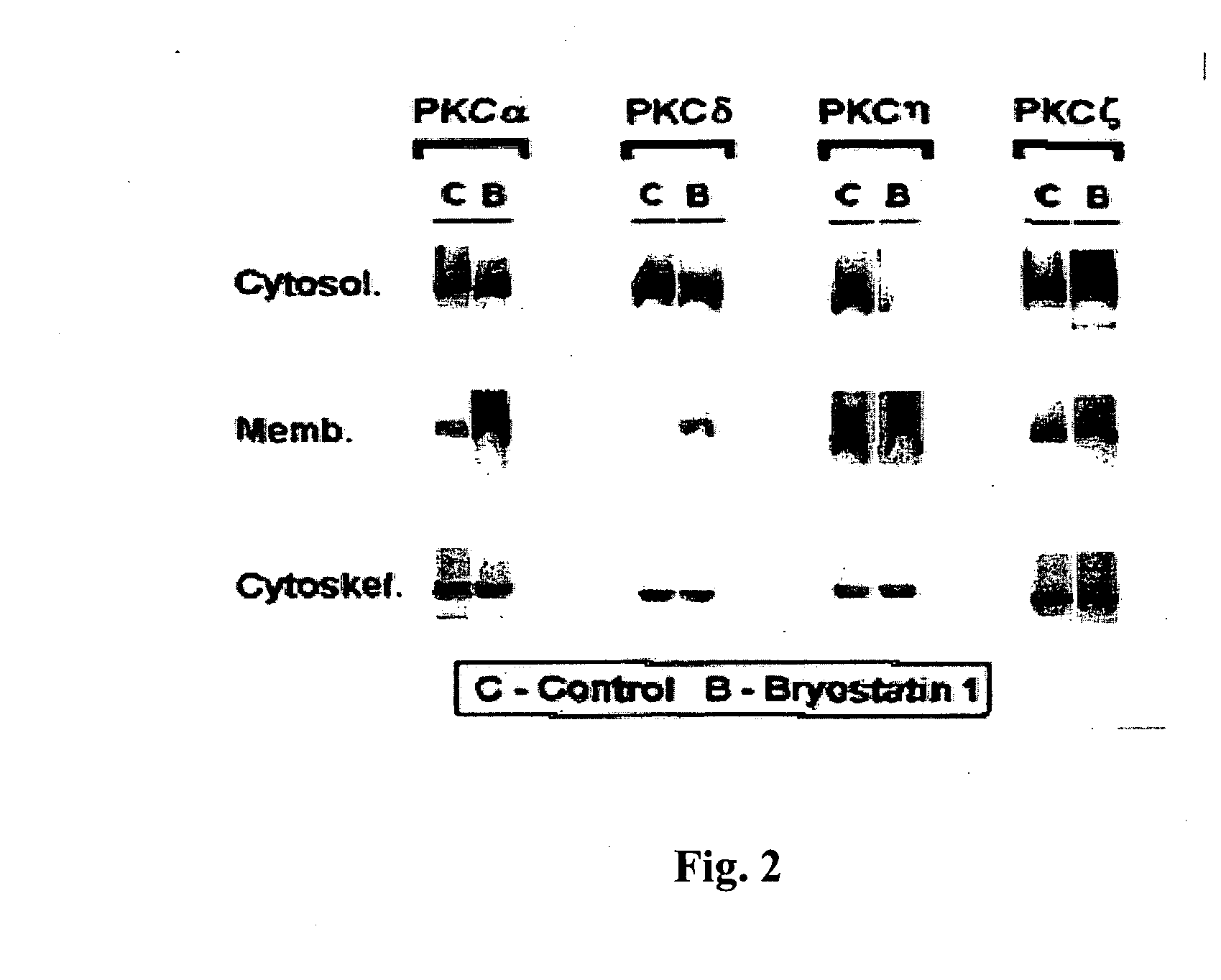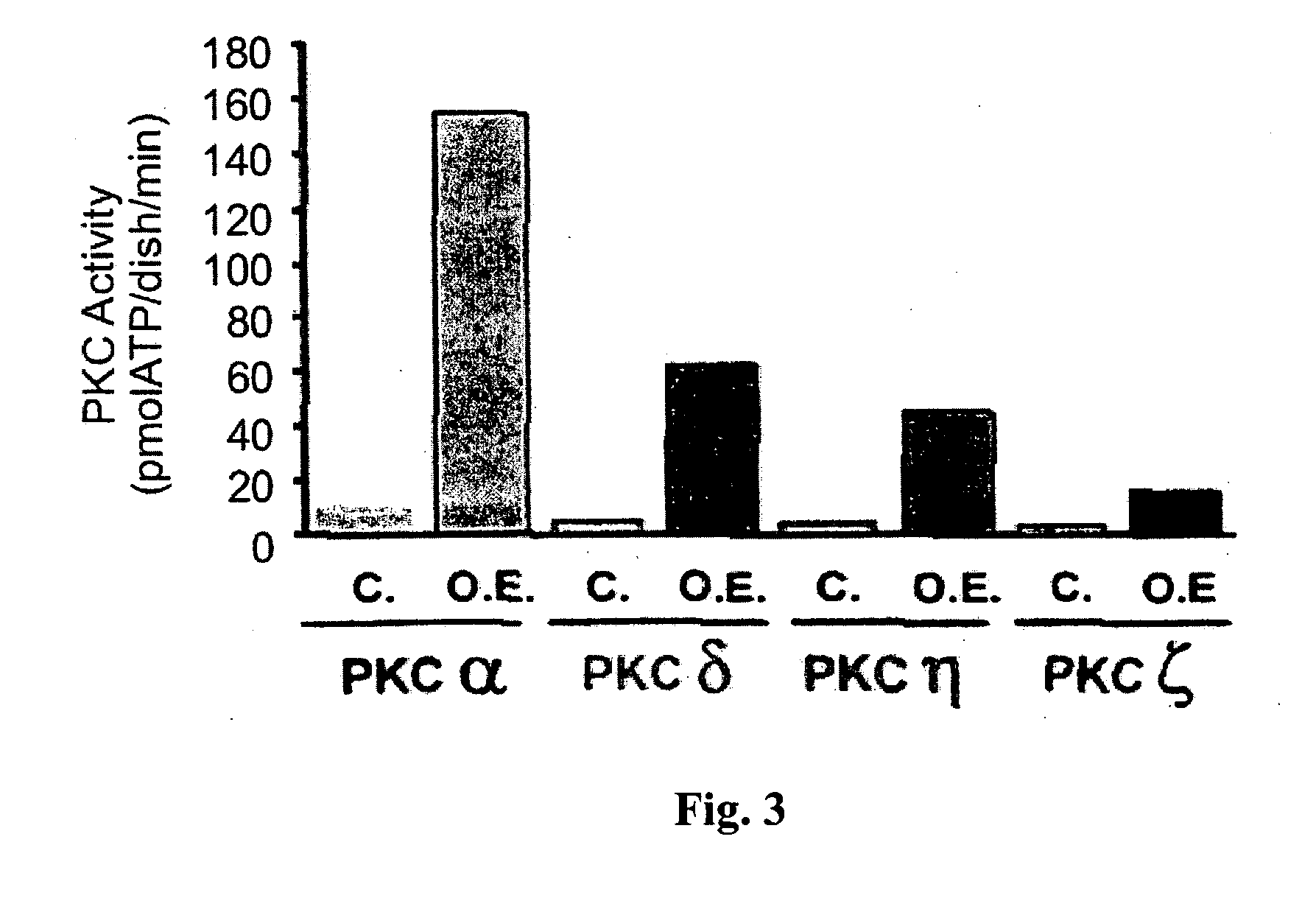Methods and pharmaceutical compositions for healing wounds
a technology of pharmaceutical compositions and wounds, applied in the direction of drug compositions, peptide sources, peptide/protein ingredients, etc., can solve the problems of insufficient wound healing, insufficient wound healing, and insufficient wound healing, so as to achieve effective circumvention and accelerate the wound healing process
- Summary
- Abstract
- Description
- Claims
- Application Information
AI Technical Summary
Benefits of technology
Problems solved by technology
Method used
Image
Examples
example 1
Effective Over-Expression of PKC Isoforms Utilizing Recombinant Adenovirus Vectors
[0241] By utilizing a recombinant β-galactosidase adenovirus a high infection rate was achieved with more then 90% of the cultured keratinocyte population expressing the recombinant protein. The recombinant β-galactosidase adenovirus infection did not affect cell viability or cell growth. Furthermore, β-galactosidase expression was sustained for up to two weeks of culture and was used as a control infection in following experiments. The efficiency of recombinant PKC adenovirus constructs to induce protein expression and be activated properly in mouse keratinocyte cultures was examined. As seen by Western blotting in FIG. 1, 24 hours following a 1 hour infection with recombinant PKC adenovirus constructs, a dramatic increase in specific PKC protein expression was observed five to ten fold above the endogenous expression levels of the specific isoforms. Recombinant protein could be detected in infected ...
example 2
Over-Expressed PKC Isoforms are Activated by PKC Activators
[0242] Recombinant proteins of the PKC isoforms responded typically to PKC activators. As seen in FIG. 2, treatment with bryostatin 1 (10 nM) induced translocation of PKCα and δ proteins to the membrane fraction, with a lesser effect on PKCη and ζ isoforms, similarly to results obtained with the endogenous isoforms and as expected from their cofactor requirements.
example 3
Over-Expressed PKC Isoforms are Active in their Native Form
[0243] As early as 18 hours following infection, PKC kinase assays revealed that immunoprecipitates of distinct PKC isoforms were enzymatically active without further need of stimulation by PKC activators (FIG. 3).
PUM
| Property | Measurement | Unit |
|---|---|---|
| concentration | aaaaa | aaaaa |
| concentrations | aaaaa | aaaaa |
| concentrations | aaaaa | aaaaa |
Abstract
Description
Claims
Application Information
 Login to View More
Login to View More - R&D
- Intellectual Property
- Life Sciences
- Materials
- Tech Scout
- Unparalleled Data Quality
- Higher Quality Content
- 60% Fewer Hallucinations
Browse by: Latest US Patents, China's latest patents, Technical Efficacy Thesaurus, Application Domain, Technology Topic, Popular Technical Reports.
© 2025 PatSnap. All rights reserved.Legal|Privacy policy|Modern Slavery Act Transparency Statement|Sitemap|About US| Contact US: help@patsnap.com



